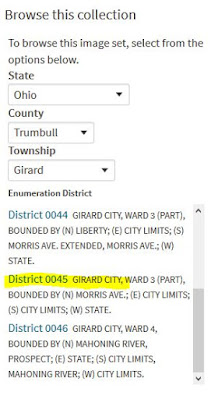It's been my experience that anyone who becomes involved in genealogy becomes obsessed with genealogy. We each have our areas of focus. Some people spend years trying to go back another generation in one troublesome branch of their tree. Others concentrate on the males only, climbing the tree one generation at a time. Me? I want everything. Everything!
When I started my tree, all I knew about my mother's father's family were his siblings' names (Eve and Noah to his Adam!) and that his mother might have been named Mariangela (she wasn't). But I wanted to know more. First I wrote to the webmaster for his town's website and he was kind enough to send me my grandfather's parents' names, birth dates and marriage date, as well as the birth dates of his siblings. Then I began ordering microfilm through the Family History Center of the vital records from his hometown in Italy.
Armed with my great grandparents' names and birth dates, I was able to locate their birth records and learn their parents' names. During that search I found other names that may have been siblings to my great grandparents.
That's when I knew I had to document all the records (1809–1860) for the entire town to see exactly how they all fit together. In the end, this long process yielded about 12,000 people for my family tree.
Twelve thousand people.
The whole time I worked on that project, which was about five years, all I kept thinking about was how much I wanted to do the same for my other grandfather's town—the town my maiden name comes from. But work got in the way, and I no longer had the freedom to go view microfilm at my local Family History Center during their limited hours. I kept hoping that my other grandfather's town's records would be digitized and made available on familysearch.org, but it didn't happen.
Then I discovered an Italian website that has the vital records for all of my ancestral hometowns! So now it begins again. I am meticulously downloading every single birth, marriage and death document from the town of Colle Sannita, ranging from 1809–1942 with a few gaps. That's a lot of documents.
As I download them, I make note of two key last names: that of my grandfather (Iamarino) and his mother (Pilla). Once I have them all I will begin:
- transcribing the basic facts into a spreadsheet,
- entering confirmed relatives into my Family Tree Maker file,
- piecing together every relative in the town.
Today my tree has more than 19,000 people. (I told you I'm obsessed.) After this project, I should hit 30,000. That's a great start, don't you think?







